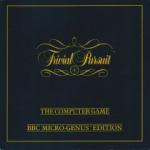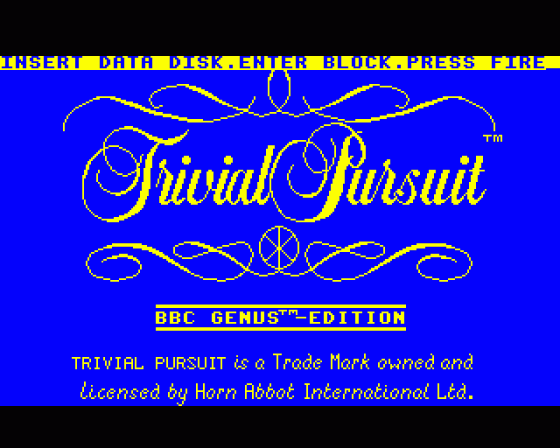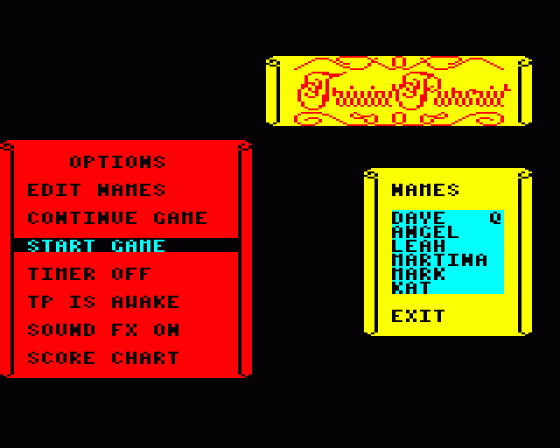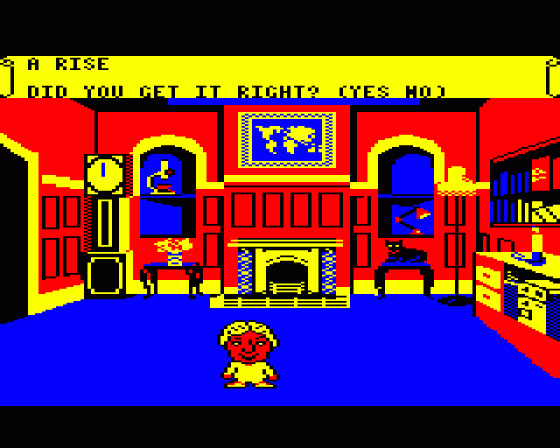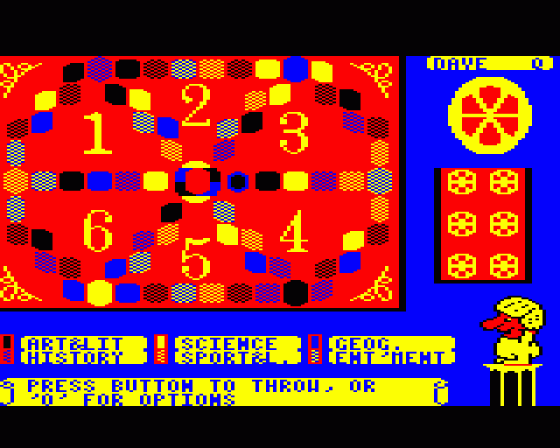
Beebug
 1st November 1986
1st November 1986
Categories: Review: Software
Author: Sarah Williams
Publisher: Domark
Machine: BBC B/B+/Master 128
Published in Beebug Volume 5 Number 6
Trivial Pursuit (Domark)
After the huge success of the board game "Trivial Pursuit", it was perhaps inevitable that a computer version would eventually appear. Domark is the company concerned and they are already claiming enormous interest in the computer version.
First impressions of the game were coloured by the fact that the instructions were neither informative nor clear. Indeed, it took quite some time to get the game started. Once the game is underway you are introduced to the character of T.P. who guides you through the quiz and acts as a referee.
Unlike many computer games, where you play against the computer, you have the option of playing against as many as five opponents. Of course, if you wish, you can just practice in 'single-player' mode. As in the original board game, those playing take it in turns to answer questions on a variety of subjects. In the computer version, unlike the board game, these questions include both visual picture questions and audible music questions.
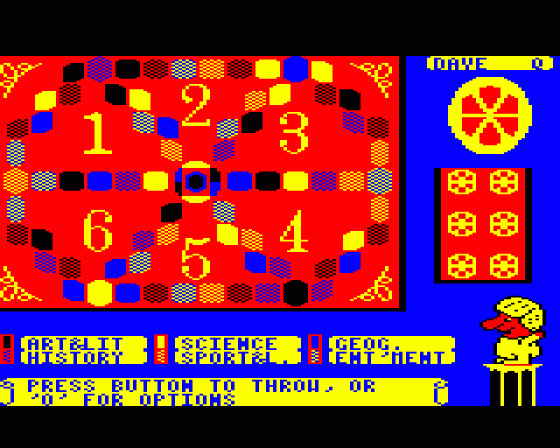
When you are ready to begin playing, T.P. randomly throws a dart at a number from one to six. This is a substitute for the old fashioned die. Your choice of squares to move to is then highlighted on the screen. When you have decided on your chosen subject the screen changes and you find yourself in T.P.'s study. Depending upon the question category selected, the study is decorated appropriately. When a graphical question arises the 1lights dim and a screen rolls down from the ceiling ready for the projected image. Musical questions are heralded by T.P walking over to the tape recorder.
Once you have worked out your response you press the space bar and the correct answer is displayed on the screen. It is then up to you and your opponents to decide whether you were correct or not. One feature you will either love or hate is the way T.P. paces impatiently up and down, audibly tapping his feet, as he waits for your answer.
The graphics of the game, to my mind, could have been better in places. The board itself on a colour monitor was clear enough, but on a monochrome monitor it was difficult to determine which 'colour' belonged to which subject category.

The display gives an adequate representation of the game most of the time, but on any visual questions the pictures are quite small with 1little detail, and in several cases unrecognisable in my view.
Overall, if I was to compare it to the original board game, I would have to favour the latter. The computer version seems to introduce too many unwanted complications that detract from the spontaneity and enjoyment of the original. The continual change of scene from the game board to the study and back to the board also becomes a little tedious after a while. The only advantage of the computer version is the opportunity to include musical questions.
Despite many irritations in the playing of the computer version of Trivial Pursuit, the name alone is probably sufficient to ensure that Domark will have a runaway success this coming Christmas. But, in my view, the original board game will provide far more enjoyment for the majority of players.
Other Reviews Of Trivial Pursuit: Genus Edition For The BBC B/B+/Master 128
Trivial Pursuit (Domark)
Significantly Trivial

